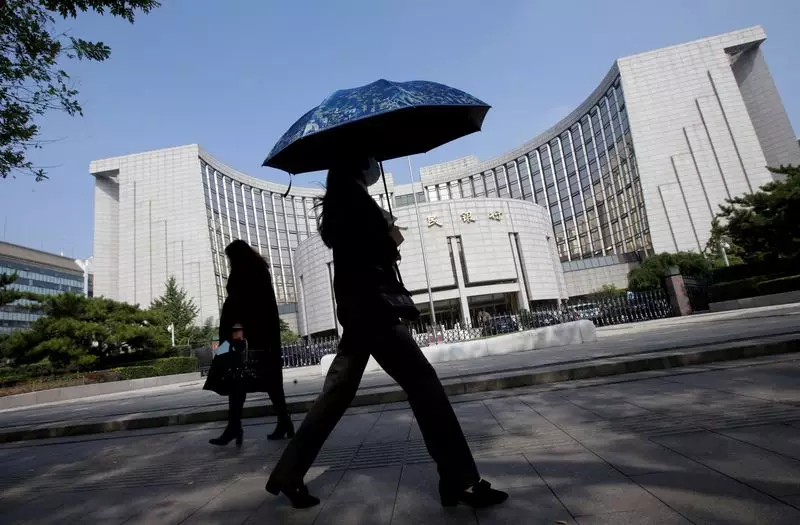In a surprising move, China opted to maintain its benchmark lending rates during its recent monthly fixing, despite widespread expectations of a rate cut. This decision, which appears to defy market speculation fueled by the Federal Reserve’s recent decision to cut interest rates, raises critical questions about China’s monetary policy strategy. The one-year loan prime rate (LPR), which serves as a standard for most loans, remains at 3.35%, while the five-year rate, crucial for mortgage pricing, stands at 3.85%. This article delves into the implications of China’s consistent stance on its lending rates, the pressures affecting its economic landscape, and potential future policy adjustments.
Prior to the lending rate announcement, a notable majority of market analysts had anticipated a decrease in both LPRs due to the unfolding economic challenges. A Reuters survey revealed that 69% of respondents expected rate cuts, driven by disappointing economic indicators. The decision not to cut rates was unexpected and has sparked discussions among analysts who view this stance as a double-edged sword. While maintaining the rates allows the People’s Bank of China (PBOC) to avoid destabilizing the yuan in response to external pressures, it also highlights the cautious approach that Chinese policymakers are adopting amid fluctuating global economic conditions.
The Federal Reserve’s recent interest rate cuts have provided China with a unique buffer. With the Fed easing its monetary policy, analysts argue that China now has more freedom to implement its own stimulus measures without the immediate fear of exacerbating the depreciation of the yuan. This newfound leeway could allow the PBOC to pursue a rate cut in the future as part of a broader economic stimulus package aimed at injecting necessary liquidity into the faltering economy. According to analysts, the absence of immediate action may suggest that the PBOC is strategizing an impactful response to the current economic climate.
Recent economic indicators have raised alarm bells regarding the health of China’s economy, with several metrics underperforming expectations. Data from August revealed that credit lending and other activity indicators failed to meet forecasts, enforcing the narrative of a stagnating economic environment. Moreover, as global brokerages recalibrate their growth outlook for China, many have lowered their 2024 growth forecasts below the government’s target of approximately 5%. The urgency for Chinese policymakers to revise their strategies intensifies, especially as President Xi Jinping has emphasized the need for authorities to fulfill economic and social development objectives.
Market analysts, including those at Commerzbank, suggest that there is a heightened probability of the PBOC implementing rate cuts in the near term. The prevailing lackluster economic performance serves as a compelling argument for monetary policy easing. Additionally, experts emphasize that a decline in the five-year LPR is crucial for effectively lowering existing mortgage rates, ultimately benefitting consumers and the housing market. The anticipation of a coordinated response signifies rising expectations of a comprehensive policy package that could include various fiscal and monetary tools to stimulate economic activity.
China’s recent decision to keep benchmark lending rates unchanged adds complexity to its monetary policy landscape. As the world’s second-largest economy grapples with economic headwinds and global market pressures, the need for proactive measures is critical. Analysts suggest that while immediate rate cuts may not have materialized, they could be imminent as policymakers seek to sustain growth momentum. The divergent paths of major economies, particularly in light of the Federal Reserve’s actions, will continue to shape the economic strategies deployed by Beijing. In this context, the PBOC’s next steps will undoubtedly be closely monitored as they may have lasting implications for both domestic and global markets.

